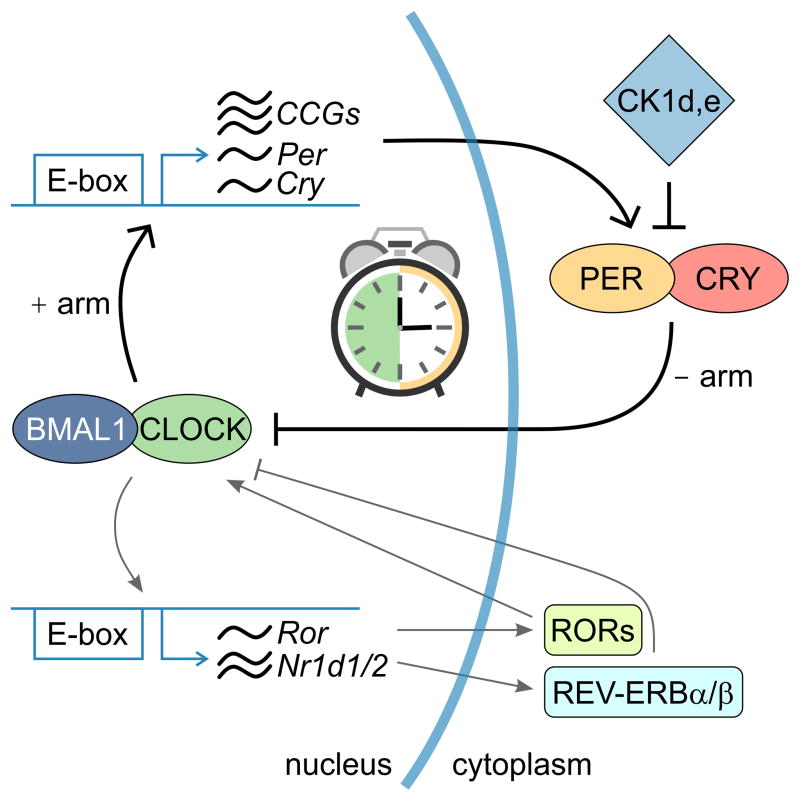Figure 1.
The molecular clock. The molecular feedback loop is at the core of circadian rhythm generation and drives approximately 24 hr oscillations in core clock protein expression. The loop is composed of a positive arm (CLOCK and BMAL1) that bind to E-box consensus sequences driving the expression of PER and CRY, which are components of the negative arm of the loop. PER and CRY inhibit the ability of CLOCK and BMAL1 to bind onto DNA, thereby leading to the gradual decline of PER and CRY levels allowing CLOCK and BMAL1 to once again restart the positive drive of the loop. Post-translational modifications by Casein Kinase 1 δ,ε (CK1 δ,ε) or additional loops (REV-ERB and ROR regulation of Bmal1 expression) reinforce and fine-tune the clock. Many of these circadian clock genes drive the rhythmic expression of other output genes or clock controlled genes (CCGs) that are involved in a variety of cellular processes.

